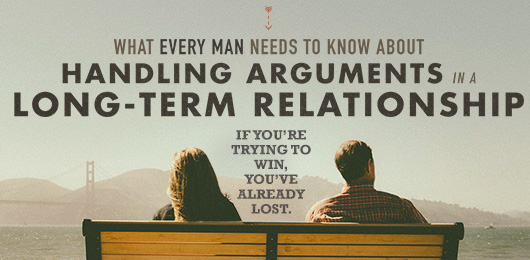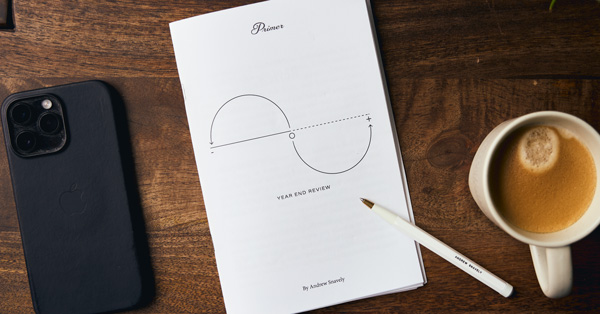I want you to give something a try. It may seem corny, and maybe a bit ridiculous, but no one will know that you’re doing it but you.
Do this: Go into your calendar and set yourself a recurring reminder.
The reminder should say:
“Be awesome for the next 60 minutes.”
Ideally, you should have this reminder recur every 60 minutes. But for now, you can have it happen just three times a day: once in the morning, once in the afternoon, and once in the evening. Just make sure you make the period of awesomeness longer if you have fewer reminders.
Now, go about your day.
When you get that notification, you’re going to look down at your phone. But instead of some random distraction, some Facebook notification or Twitter trend alert, you’re going to see a reminder to make a new hour’s resolution.
What’s a new hour’s resolution? A new hour’s resolution is a lot like a New Year’s resolution. Except unlike New Year’s resolutions, which are usually forgotten by March, a new hour’s resolution is actually going to change your life. From now on, the top of every hour is going to be New Year’s Day. Just like you do on January 1st, you’re going to make a promise to be better. No, not just better—you’re going to be your best.
For the next 60 minutes, you are going to be awesome.
Define Awesome
I know that “be awesome” sounds as vague a goal as “eat better” or “save money” or any of the other worthless goals we usually give up by March when we make them on New Year’s. So, let me give you a working definition of awesomeness to get you started.
Let’s say baseline is what you’ve been doing. Baseline is what anyone would expect you to do, given the circumstances and challenges in your life. Baseline is the minimum that you have to do as a human being for people not to raise an eyebrow at you. Sometimes, this means failure, or not doing something that you should do, but for reasons where no one can blame you.
Awesome is above baseline. Above baseline, or awesome, is what you are when you perform way, way better than anyone would expect given the circumstances and challenges in your life. Many times, this means being victorious even when no one would’ve blamed you for failing or giving up. It can also mean failing, but putting forth a more earnest effort than anyone expected you to.
There's a pretty simple test to tell if you are being awesome or not. In any given moment, imagine you are in the future, a day later or a week later, telling your friend what happened and how you acted in the situation. How he reacts tells you how you did.
Reaction: “Dude, that's okay. I totally understand.”
Performance: Middling to Normal
Reaction: “Dude, that's awesome!”
Performance: Awesome
Here's an extreme, yet real life example:
Circumstance: Terrorists crash airplanes into the World Trade Center, turning Manhattan into ground zero and killing thousands. The next day, New York Jets quarterback Vinny Testaverde decides that he is not going to play football that week.
Reaction: Totally understandable.
Circumstance: Terrorists crash airplanes into the World Trade Center, turning Manhattan into ground zero and killing thousands. The next day, Steve Buscemi quietly rejoins the firefighter company he belonged to in his twenties and works 12-hour shifts sifting through the rubble searching for survivors. No one knew about this at the time—Buscemi avoided the cameras and refused interviews during the days he spent working there.
Reaction: Totally awesome.
Times of crisis are the greatest opportunities to be awesome. Being awesome doesn't require you to be particularly heroic, or even victorious. It means sticking to what you know is the good and noble thing to do, even if your friend would forgive you for doing less. In the scenarios above, awesomeness doesn't mean preventing 9/11 from happening or finding out who was responsible for the attacks within hours. Awesomeness is doing the best possible thing that can be done in that moment.
Everyday Awesomeness
Now, I hope you won’t have events as traumatic as that happening to you once an hour. But if you begin making new hour’s resolutions to be awesome, your reminder is inevitably going to go off in the middle of times of high stress, despair, or exhaustion. These are times when you can choose to do what everyone expects of you. Or you can choose to be awesome.
How are you going to do that? It might be hard at first. But by setting the intention, you've already taken a huge step. Because before now, you have been subconsciously choosing to be at baseline.
You’ve been giving yourself permission to be a shittier version of yourself by letting two irrelevant things dictate your performance bar: your mood and the circumstances.
When you make a New Year's resolution, you don't do it because you feel like it and the weather is nice. Honestly, on a frigid winter day with a massive hangover, you probably don't feel like doing anything. You do it because it's January 1st. You do it because there is this tradition to try to be better on this arbitrary day.
Your new hour's resolution is just as arbitrary and irrelevant to your state of mind and surroundings.
This is exactly how you want it to be. You want the call to be awesome to come at the worst time possible.
You want to be right in the middle of an argument with your boss.
You want to be two minutes from falling asleep on the couch in your work clothes with Netflix asking “Are you still watching?”
You want to be on a European vacation, stranded in the middle of nowhere with a flat tire and your fiancée pissed off at you and your mother-in-law in the backseat struggling against traveler's diarrhea with all her might, but losing ground fast.
In that case, if you collapsed on the side of the road in despair and called off the engagement, dude, I would totally understand. But if you were to play it off cool, stay calm and either save the day or at least haggle a local sheep herder for a clean pair of pantaloons for mom-in-law, then you are totally awesome.
Even if you are up shit creek and you are the dumbass who forgot the paddle, you can make the decision to be the maximum level of awesome possible for the next 60 minutes. Just like on New Year's Day, it doesn't matter what happened leading up to this moment. Your hour of awesomeness begins now.
A Note on External Validation
I recognize that my awesomeness test—where you imagine how your friends or former classmates judge you—may have bristled a bit. This isn’t high school, after all. Approval from others doesn’t dictate our self worth.
The point of the awesomeness test exercise is to get outside your own head for a moment. If we are lazy and want to remain lazy, we might draw on a bit of motivated reasoning to convince ourselves that it’s okay. By taking a step outside of your own perspective—even if it’s a contrived and hypothetical one—you get a more objective look at your intentions and actions. You get to see the present moment as you’ll see it down the road, when you are looking back and (hopefully) not regretting the path you took.
4 Steps to Awesome
This is all easier said than done. Intention is only half the battle. Execution is the other.
There are four major barriers to a new hour’s resolution to be awesome: lack of initiative, lack of motivation, lack of emotional control and lack of direction. Here’s what you should do with each of them.
1. Remember to Be Awesome
At first, this will be the hardest part. As the day drags out and gets busy, it’s easy to get caught up in the moment and forget the intentions you set that morning or an hour ago. If your phone reminders aren’t doing the trick to keep you mindful of your awesomeness, then there are a few other things you can try, too.
Reality Checks
In addition to an arbitrary reminder on your phone, assign some random objects the job of reminding you of your goal. For example, say every time that you pass through a doorway or turn on a lightswitch or see the color red, you are going to make a new hour’s resolution. This is similar to the idea of a reality check for people who are trying to learn how to lucid dream. If you’ve seen the movie Waking Life, you’ll remember that digital clocks gave cues to whether or not the main character was dreaming (they were jumbled in a dream). Assign mundane objects the task of reminding you to check-in.
Mindfulness Bells
I was inspired to write this article by the concept of a mindfulness bell. A mindfulness bell is literally a bell that rings periodically or at random intervals to signal meditators to refocus their attention on their breath and surroundings. It helps rein in the wandering mind and draw you deeper into a state of mindfulness.
Instead of a calendar reminder, you can get yourself a mindfulness bell app to ring randomly throughout the day. In this way, it's even more likely to catch you at a moment when your mind was on something other than personal awesomeness.
Here are a few apps to try:
- Mindfulness Bell – Free, Android
- Mindfulness Bell – $0.99, iOS
- Insight Timer – Free, Desktop/Android/iPhone
Stress Threshold
This is actually the best trigger for your new hour’s resolution, but it takes a high level of emotional intelligence (EQ) and awareness. Instead of waiting for your phone to remind you to be awesome, condition yourself to respond to stressful situations with a new hour’s resolution. If you feel your stress levels starting to rise, or if you know a tense situation is coming up (a personal confrontation, a fraught social situation, a job interview, parallel parking in front of a bunch of stoop sitters), take 60 seconds to gather your thoughts and start your hour of awesomeness before you dive in.
2. Boost Motivation
I know why you might not want to take on this challenge to make a new hour’s resolution. You are worried that the reminder is going to pop up at a time when you really don’t feel like being awesome. Maybe you’d rather be lazy and lounge on the couch and eat pizza for the next hour.
I’m certainly not against that.
But let’s do our awesomeness test.
Imagine you are in the future, telling your friend what you did with your Friday evening. Or better yet, imagine you are at your class reunion, telling your classmates what you’ve achieved with your life over the past year.
Do they think it’s awesome?
If you are happy with their hypothetical responses (and maybe you are), then I invite you to continue to take the night off. But if there’s a goal you are working toward—writing a novel, getting in shape, getting a job—make that a part of your awesomeness.
The good news is that if you do that, the motivation will come automatically. A study conducted out of the Wharton School at the University of Pennsylvania found that the fresh-start effect—that big jolt of motivation we get on New Year’s Day when we imagine ourselves with a clean slate—can also be harnessed throughout the year.
The key is to really mean it when you make that new hour’s resolution. Forget about what you did in the past hour or the past week or even the past minute and start being awesome on a go-forward basis.
As explained by professor Katherine Milkman, one of the lead researchers in the fresh-start effect study:
Why? Because in these fresh-start moments, people feel more distant from their past failures. Those failures are the old you, and this is the new you. The fresh-start effect hinges on the idea that we don’t feel as perfect about our past as we’d like. We’re always striving to be better. And when we can wipe out all those failures and look at a clean slate, it makes us feel more capable and drives us forward.
3. Switch Off Stressure
In almost every epic tale of awesomeness, the hero is the one who stayed calm and cool in the face of stress and pressure. In some cases, that’s all the hero did. So, if you’re just starting out with your new hour’s resolutions, make that your number one goal: stay calm.
But how?
We are not robots who can simply switch off our rage and anxiety and magically be bright and coherent.
Or are we?
What happens in our brains and bodies when we are stressed is becoming less mysterious everyday. If I say “fight or flight,” you already know what I am talking about. When you are stressed, your brain gets a bath of various nerve chemicals and hormones that are great for punching saber tooth tigers in the face but not so great for diplomatically talking your boss's boss out of downsizing your department out of existence.
There's a lesser known opposite response to fight or flight. It's controlled by the parasympathetic system, and basically it puts the brakes on stress-driven overdrive. That is, it calms you down on a physiological level.
There's a hack to activate this parasympathetic system response on demand, and it's ridiculously simple: just breathe.
The magic mood switch that is the key to your hour of awesomeness is your breath. When you are stressed, your breaths are shallow and fast, like a dog panting. When you are relaxed, your breaths are deep and long, like a dog sleeping. The hack is that you can stimulate the parasympathetic system by breathing deeply, like a tail wagging a dog.
Even if the external situation is tense, your brain notices you are breathing deeply and it's like: “Whoa, deep breathing? I guess it's time to calm down now.” It's like talking to your dog in a happy voice to calm him down while he barks at thunder.
So, if you can, this is the first thing you should do when your awesomeness reminder goes off. Take 30 seconds and breathe deeply. Inhale for five seconds then exhale for five seconds. Do this three times. Then, re-enter the situation.
This trick is so simple, you might think that it’s not going to work. But it does.
I was looking for an expert on purposefully shifting emotions, and I found Jackie Barretta, author of Primal Teams. Primal Teams is an entire book on harnessing positive emotions and transforming fear and negative emotions in the workplace. In it, she recounts numerous stories and case studies where leaders got their teams to creatively solve vexing problems and overcome anxiety and negativity by shifting their emotions to an optimal state. In one story, she writes about a team leader whose people are suffering from severely low morale, caused mostly by frustrations being pushed down from upper management. So, here’s what he does.
Each day for a week, he convenes a 15-minute meeting where he guides the team through a three-step exercise:
- Stop. Erase thoughts from the mind by focusing on something innocuous and neutral. For example, a perfect, red ripe tomato.
- Breathe. See above re: the parasympathetic system. In this case, he asked his team to focus on the area around their heart and imagine breathing into the heart for 10 to 15 seconds.
- Activate. Conjure up a genuine heartfelt moment. Really feel it with our entire body. For example, bringing home a newborn baby home from the hospital or winning a basketball game.
What happened in this scenario? The stressors on the team didn’t change. They remained plagued by the whimsy of higher ups in corporate. But the entire dynamic and energy of the team changed over the course of a few weeks. As Barretta writes:
They smile more often, laugh a lot, and obviously enjoy each other’s company much more than they did a few weeks earlier… Everyone seems freshly energized, exuding much more confidence and enthusiasm. Best of all, they’re coming up with solutions rather than dwelling on problems.
More Deep Breathing Techniques
This article by Everyday Health gives a few more breathing techniques you can try:
- Coherent breathing – This is the five seconds in, five seconds out technique I described here. According to Everyday Health, this “maximizes the heart rate variability (HRV), a measurement of how well the parasympathetic nervous system is working.”
- Resistance breathing – This is breathing that creates resistance to airflow to create a greater relaxation effect. So, try breathing through your nose or chanting or singing.
- Breath moving – Send your breath on a little journey through your body, for example, up to the top of your head and out the base of your spine. This helps you keep your mind on the breathing exercise.
4. Find Direction
Okay, you are calm and motivated. Right? Now, it’s time to point your ship in the right direction.
While researching this article, I talked to Andrea Lee, who wrote the book We Need to Talk: Your Guide to Challenging Business Conversations. I talked to Lee because she has lots of experience with tense, emotionally-charged situations—the very kinds of situations where your level of awesomeness can make or break you.
I asked Lee what advice she’d give someone as they are about to enter the fray. And she told me about the Delta Model. This is a series of three simple questions to ask whenever you are trying to “get somewhere” (i.e. create change).
At the beginning of your hour of awesomeness, ask them to yourself.
- Where am I right now?
- Where do I want to be?
- What are some ways I can get there?
The Delta Model works for introspective endeavors as well as interpersonal interactions. Lee wrote about the effectiveness of the Delta Model in meetings for Carrier Management:
You can even whip out the questions when you’re put on the spot to lead any kind of conversation, and you’ll see how well they serve you. If you’ve never experienced being the “Switzerland” in a given conversation and think you might like it, there’s one more reason to make the Delta Model one of your go-tos as a business person. People readily rally under a structure that, in its simplicity, doesn’t seem to have a hidden agenda. You might be surprised at how much more trustworthy you’re perceived to be when you lead in this way.
These four steps should be in the back of your mind whenever you get the prompt to be awesome. While they aren't the solution to every problem in and of themselves, they will put you in the ideal emotional and mental state to find that solution.
Blame vs. Responsibility
One of the greatest benefits of a new hour’s resolution is that it frees you from the blame game. In your hour of awesomeness, you only look forward. If there is problem at hand, you focus on the resolution, not the cause.
This is called taking responsibility.
There’s a fallacy that the party who is to blame has to take responsibility for righting a situation. That’s simply not true.
When disasters strike, you see a number of organizations swoop in, like the American Red Cross, Doctors Without Borders, and international and federal government agencies. They take responsibility for saving lives without caring who or what was to blame for the disaster.
During your new hour’s resolution to be awesome, imagine you are sending in the emergency response team. You aren’t sending in the FBI, you’re sending in relief workers.
We often waste the first critical moments of a crisis or tense situation playing the blame game. This is patently stupid and unproductive behavior, but for most of us, it's second nature. One of the reasons is that blaming is a defensive reflex. When a person blames us, or we perceive that they are blaming us, we try to defend or deflect the blame by pointing the finger at someone else. Either way, we are scrambling to get out of the crosshairs when really, we should be cooperating to solve the problem.
Mistakes happen. But next time you are in the moment, declare a cease fire on the blame game and instead focus on the present. Unless the cause is relevant to the solution (e.g. is this an electrical fire or a grease fire?), save the investigation for later.
Developing a Habit for Awesomeness
Go ahead and try this for a week, or two weeks, or a month. Do it and take note of how it changes the way you respond to life's worst moments.
I don't expect you to have to do this every hour for the rest of your life. Because if you do it well, you won't have to set yourself a reminder anymore. The external prompt will become an internal prompt.
The reminders, the mindfulness bells, the new hour’s resolution—these are just training wheels.
The goal here is to develop a habit for performing awesomely in challenging times. The trigger shouldn't be a reminder on your phone, it should be an inner threshold of stress or discomfort. And the action you take shouldn't be a singular act of heroism, it should be this well-practiced process you've developed that lets you methodically sort out your emotions and proceed with coherence and purpose.
If you do this, then your natural response to stress and challenges will be to rise to the occasion, rather than fleeing from blame and responsibility. It will no longer be a goal, it will be a habit. And because this habit is so rewarding, it will remain unbreakable for the rest of your life.



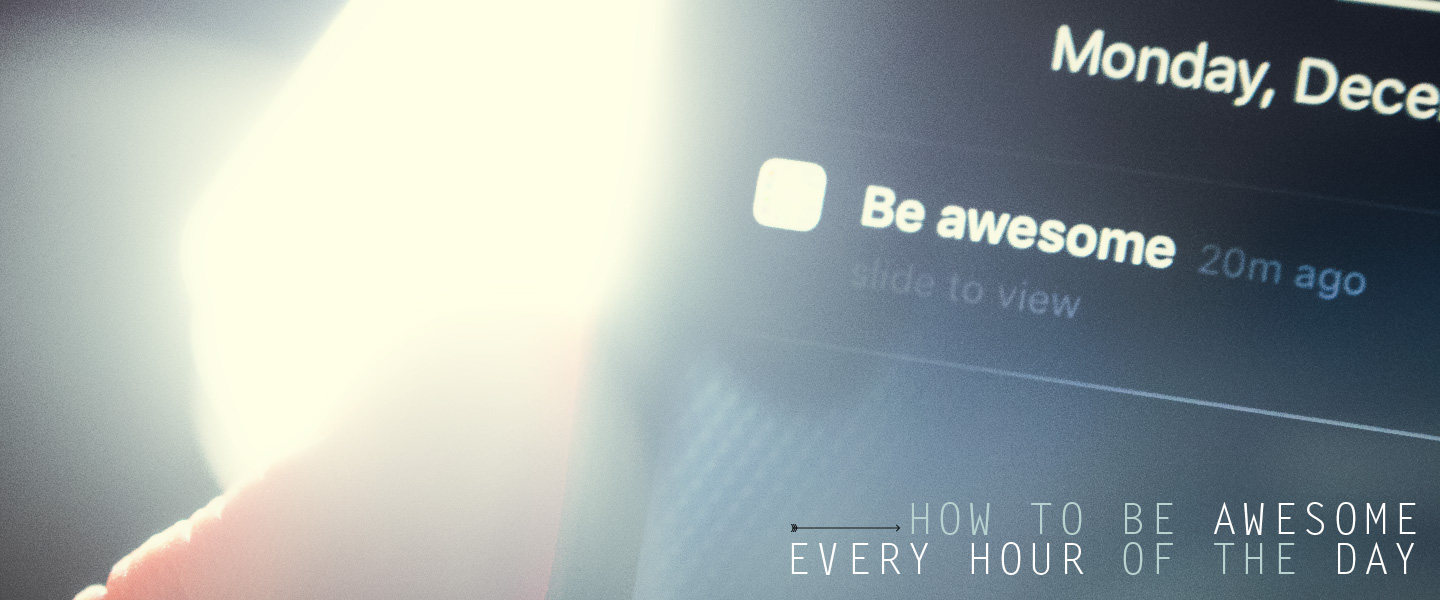
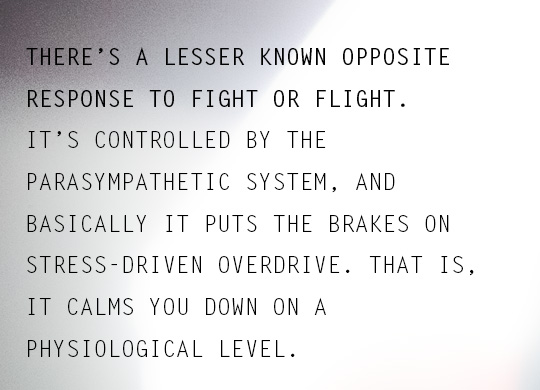

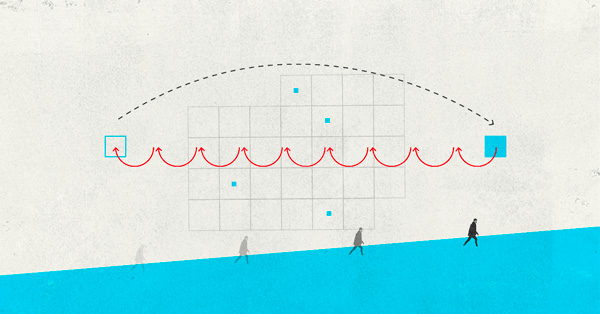
![It’s Time to Begin Again: 3 Uncomfortable Frameworks That Will Make Your New Year More Meaningful [Audio Essay + Article]](https://www.primermagazine.com/wp-content/uploads/2025/01/begin_again_feature.jpg)


